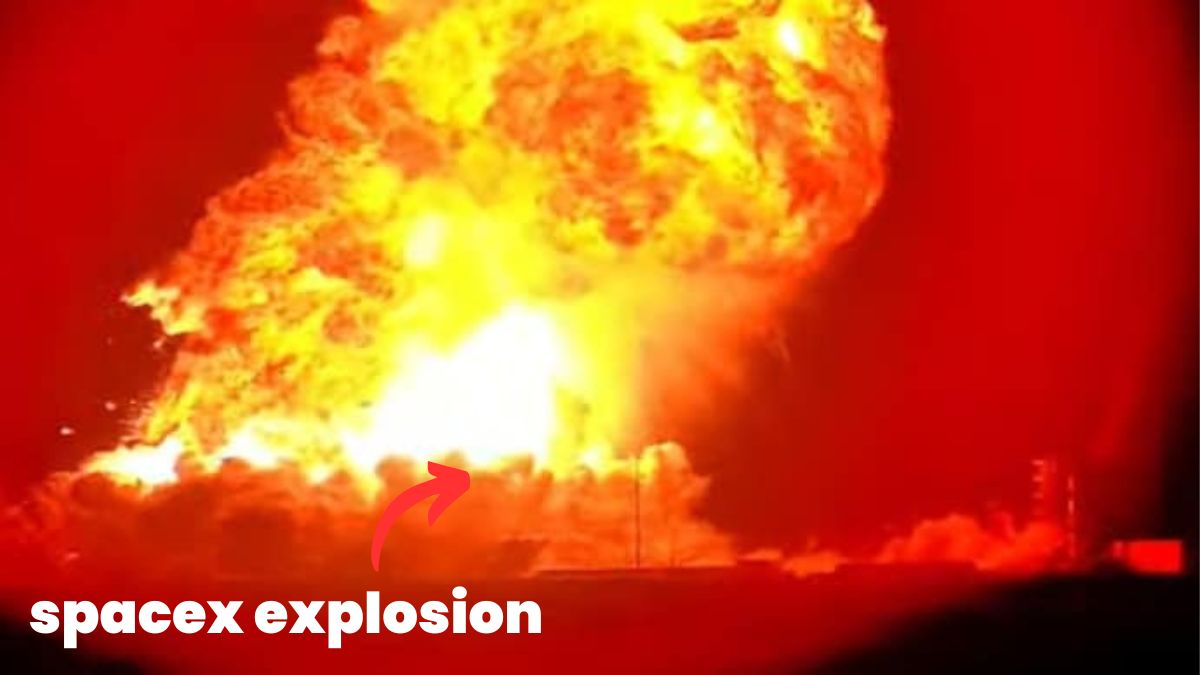SpaceX Explosion:SpaceX, the revolutionary aerospace company led by Elon Musk, has encountered both triumphs and setbacks in its journey to dominate the space frontier. Among these setbacks, one of the most significant and widely publicized is the SpaceX explosion, which not only shook the industry but also raised concerns about the future of private space exploration. This article delves deep into the causes, impact, and implications of the SpaceX explosion, offering a thorough understanding of the incident and its consequences on the aerospace landscape.
What Happened During the SpaceX Explosion?
On April 20, 2023, SpaceX’s Starship, the most powerful rocket ever built, exploded just minutes after its launch from Boca Chica, Texas. The event was intended to be a test flight — the first fully integrated launch of the Starship upper stage and Super Heavy booster. Unfortunately, what was expected to be a groundbreaking moment in spaceflight turned into a fiery spectacle as the rocket failed to separate properly and was ultimately destroyed by SpaceX’s automated flight termination system.
Timeline of the Incident
- T-minus 0:00 – Launch initiated from the SpaceX Starbase.
- T+2:30 minutes – Engines continued firing, but separation failed.
- T+4:00 minutes – The rocket began spinning uncontrollably.
- T+4:30 minutes – SpaceX triggered the flight termination system.
- T+5:00 minutes – Starship exploded mid-air, scattering debris over the Gulf of Mexico.
Technical Malfunction: Root Causes of the Explosion
The most plausible cause of the explosion was the failure of stage separation. SpaceX’s post-flight analysis revealed that several of the Raptor engines on the Super Heavy booster either shut down or underperformed, leading to instability during flight. This mechanical failure made the rocket tumble and spiral uncontrollably.
Additionally, the onboard computer systems failed to properly manage thrust vector control, which further compromised the trajectory. The flight termination system, a built-in safeguard, was then activated to prevent potential hazards to populated areas.
Environmental and Safety Concerns
While the explosion occurred over the Gulf of Mexico, there were valid concerns about the environmental impact and public safety:
- Debris Field: Some pieces of wreckage were recovered near sensitive wildlife habitats.
- Air Quality: Rocket propellants such as liquid methane and liquid oxygen raised concerns about potential contamination.
- Noise Pollution: The intensity of the launch and subsequent explosion disrupted local communities and endangered species.
Regulatory Backlash and FAA Investigation
Following the explosion, the Federal Aviation Administration (FAA) promptly launched an investigation. The agency temporarily grounded all future Starship launches pending a full safety review. The FAA’s statement emphasized the importance of safeguarding public safety and environmental integrity during experimental launches.
Impact on SpaceX’s Timeline and Future Missions
The explosion marked a significant delay in SpaceX’s timeline for Mars colonization and NASA contracts. Starship is a crucial component of NASA’s Artemis program, which aims to return humans to the Moon by 2026. The setback meant:
- Redesigns of Raptor engines and stage separation mechanisms.
- Delays in future orbital tests.
- Revisions in SpaceX’s Starbase infrastructure.
Despite the explosion, SpaceX publicly emphasized that the mission still yielded invaluable data. In their own words, “Success comes from what we learn.”
Public and Media Reactions
The event drew a divided response from the public and media. While critics questioned SpaceX’s safety protocols, supporters hailed the launch as a bold step in iterative engineering. Elon Musk remained optimistic, stating that future launches would be more robust.
Social media trended with hashtags like #StarshipExplosion and #SpaceXFail, but many experts urged people to view the test as a necessary experiment, not a disaster.
Lessons Learned From the Explosion
SpaceX has a history of “test, fail, learn, repeat”, and this explosion is no exception. Key takeaways include:
- Importance of redundancy in engine systems.
- Need for enhanced separation mechanisms.
- Real-time analytics during high-risk flights.
These insights are crucial for future Mars missions, where mission failures could be far more catastrophic.
Comparisons with Past Explosions
This wasn’t SpaceX’s first major explosion:
- In 2015, the Falcon 9 exploded during a CRS-7 mission.
- In 2016, a pre-launch test saw another Falcon 9 destroyed on the pad.
However, the 2023 Starship explosion was on a different scale, given its role in interplanetary travel plans.
Rebuilding and Moving Forward
Post-explosion, SpaceX immediately began updates to its systems:
- Improved stage separation technology.
- Upgraded flight control software.
- Reinforced launch pad infrastructure at Starbase.
They also fast-tracked Starship SN26 for upcoming test flights, showing a clear commitment to progress.
The Broader Impact on Private Space Industry
The explosion sent ripples through the commercial space sector. Competitors like Blue Origin, Rocket Lab, and Relativity Space closely watched the outcome. Investors remained cautiously optimistic, betting on SpaceX’s ability to innovate quickly.
It also sparked new debates about:
- Regulation vs. Innovation: How much oversight is necessary?
- Risk Tolerance: Are frequent failures acceptable in private spaceflight?
- Public Trust: How much transparency do companies owe the public?
SpaceX’s Resilience: A Culture of Calculated Risks
What sets SpaceX apart is its resilience. Instead of shying away from failure, they embrace it as a step toward success. This culture of calculated risk-taking has helped them achieve milestones no other private space company has matched.
Looking Ahead: What’s Next for Starship?
Despite the setback, SpaceX remains steadfast. Upcoming plans include:
- A full orbital test of Starship SN26.
- Integration with NASA’s Artemis lander mission.
- Continued development of launch towers and reusability systems.
Elon Musk confirmed on Twitter (now X) that the next test could happen within months, not years.
Conclusion
The SpaceX explosion may have momentarily derailed a historic mission, but it did not destroy the vision. Every flameout is a spark for something better. With renewed designs, stronger systems, and invaluable data from the incident, SpaceX is poised to bounce back stronger and faster. The road to Mars is long — and paved with explosions, learning curves, and unrelenting ambition.

